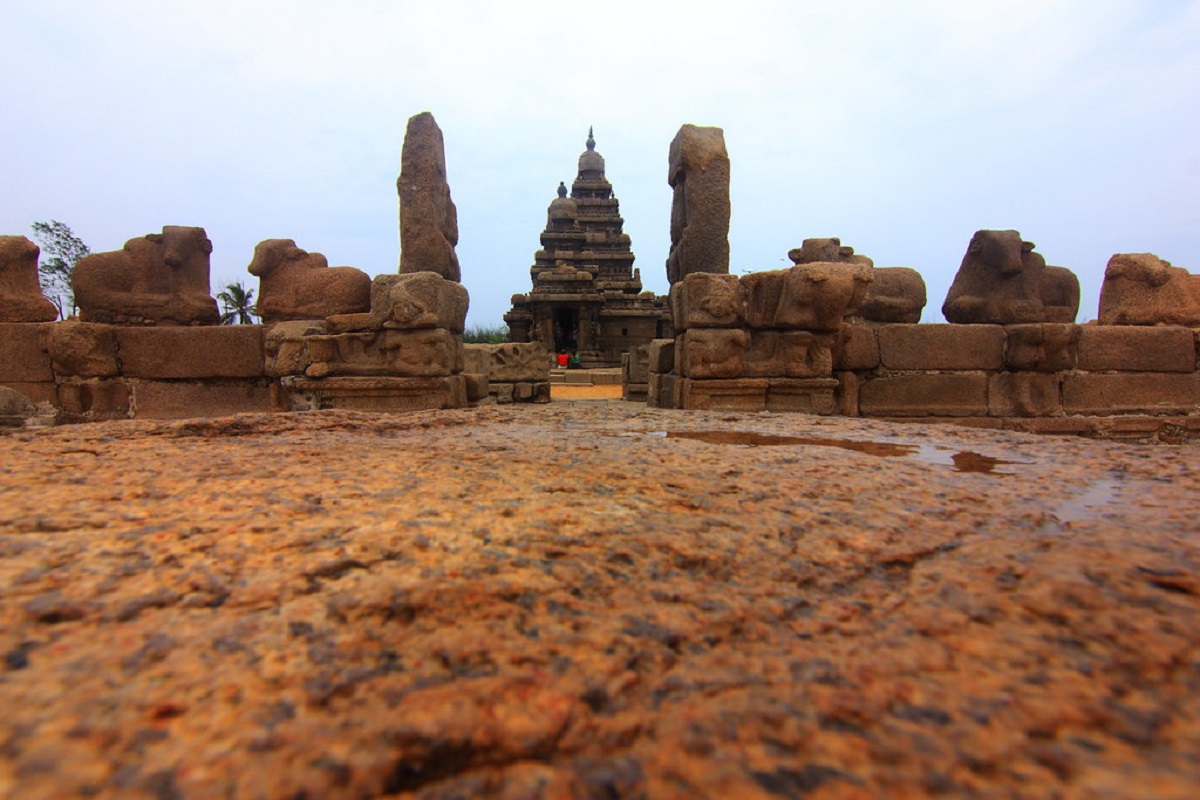The Nilgiri Mountains are in the Indian state of Tamil Nadu in South Eastern India. They are a part of the Western Ghats. The Hills are separated in the north from the Karnataka plateau by the Moyar River. In the south they are separated from the Palni and the Anaimalai Hills by the Palghat Gap. The words Nilgiri has been derived from Tamil language where Neelam means blue and Giri means mountain. This terminology has been in use since 1117 CE. The Nilgiri Mountains have been mentioned in several places of Tamil literature.
Popular opinion says that the mountains are rich in fresh blossoms of bluish flowers of Kurinji shrubs. This is one of the probable reasons that have helped to christen the mountains. The Nilgiri Mountains are wetter and cooler as compared to the surrounding planes that lie at the foothills. You can find rich rolling green pastures across the upper Hill. The place is rich in cultivation of cinchona, tea, coffee and a number of other vegetable.
Mountain Railways of India UNESCO Built by
The Nilgiri Mountains are a part of the natural landforms of the Indian subcontinent. These high steppe lands have long been inhabited by various civilizations and human clusters from the early prehistoric time. Several artifacts have been excavated from this hilly region which corroborates the fact that these hills and steppe lands were inhabited by different races of humankind in various stages of human evolution. The British Museum holds a number of such artifacts and historical remnants which were found and assembled by prominent colonial officers like Major N. J Wallhouse, James Wilkinson Breeks, and Sir Walter Elliott. The Nilgiri Hills has been declared as the UNESCO World Network of Biosphere Reserves and is a protected zone in India.
Nilgiri Mountain Timing
The Nilgiri Hills all of the most pristine and picturesque places of the nation. The mountain range has a plethora of visual extravagance which will bring you closer to the serene beauty of nature. If you are out here to experience the hill and witnessed their natural grandeur the best time to visit them is during the daylight hours. Hence the best time of visiting the steppe land and the mountains are between 7 a.m. in the morning and 6:00 p.m. in the evening. This is the best time when you can enjoy the natural beauty of the place in broad daylight and indulge into some heavenly photography.
Information on Mountain Railways of India
The Nilgiri Mountains has about 24 peaks which rise above 2000 meters. The highest of them happens to be the Doddabetta peak which rises to a height of 2,637 meters. There are three National Parks which borders portions of these Nilgiri Hills. To the northern part of the range where Tamil Nadu, Karnataka and Kerala meets there is the Mudumalai National Park. This Park covers an area of 321 square kilometers. In the Southwest part of the range which falls in the region of Kerala there is the Mukurthi National Park. This Park covers an area of 78.5 square kilometer. This part contains different varieties of soil type like the Shola grassland mosaic. This is this place is famous for the Nilgiri tahr. Finally to the south and there lies The Silent Valley National Park that covers an area of 89.5 to square kilometers.
It has been mentioned that the Doddabetta peak is the highest peak of the Nilgiri and lies to the southern extent of the range. There are other important speak like Kolaribetta, Makurni, Hecuba, Kottadadu and Khulkudi. The region is also rich in a number of waterfalls. The Kolakombai fall is the highest waterfall of the region which is in the northern part of the Kolakombai hill. This fall has an unbroken height of 400 feet. Nearby to this fall there is the Halashana falls which has a height of 150 feet. Near Kotagiri there is the Catherine Falls which has a height of 250 feet. This fall is named after the wife of M.D Cockburn who had begun coffee plantations in the Nilgiri Hills. You can also check out the Pykara falls, the Kalhatti falls, the Karteri Falls and the Law Falls.
How to Reach Nilgiri Mountain: (Air Road and Train)
The Nilgiri Hills are one of the most popular tourist destinations in Southern India. The Blue Mountains offers a heavenly retreat from the daily hustle and bustle of your busy urban life. No matter you are in which part of the country you can always reach the Nilgiri Hills using the routes of air, railways and the road. The nearest airport to the Nilgiri Mountain is in Coimbatore. It is about 105 km away from Ooty. The Coimbatore Airport has daily flights flying in from places like Trivandrum, Cochin, Bangalore and Chennai. Once you are in this Airport all you need to do is hire a private taxi or a bus and can reach your desired destination.
The Ooty railway station if the nearest from the Nilgiri mountains and it directly connect the area to Chennai and Coimbatore. The Nilgiri Mountain Railway that connect Ooty with Coonoor and Mettupalayam. The Nilgiri Mountain railway is one of the major attractions of the place. Ooty is very well connected with some of the major towns of South India through a network of highways and roads. You can avail the bus services or a private taxi to come down to Nilgiri Hills using the highway networks.
Nilgiri Mountain Entrance Fee:
The Nilgiri Hills are natural places of exquisite beauty. In most cases to visit different waterfalls and mountain peak you don’t need to pay any entrance fee. It is completely free for all the tourist and visitor. Whether you are an Indian tourist or any other foreigner for that matter it is free for all who visits the majestic Blue Mountains. However if you are planning to visit some particular place like any national park or reserve area, the Nilgiri mountain toy train, any particular museum, then you will have to pay the entrance fee as determined by the authorities of these places.
Important flora and fauna reserve in Nilgiri Mountain
The Nilgiri Mountains have particularly rich flora and fauna reserve. The blue mountains has over 2700 species of plants and flowers, 160 pieces of fern, innumerable types of flowerless plants, fungi, Moses, land lichen and algae. The dense mountain forests are the abode to numerous wild animals and mammals like elephant, leopard, Bengal Tiger, Chital dear, Sambar, Dhole, Golden jacka,l blackbuck, Indian Boar, Sloth bear, antelope, Porcupine, giant squirrel, honey badgers, Indian cobra, Indian Pangolin, Indian grey mongoose, painted bat, Indian Python, King Cobra, common krait, Oriental Garden lizard, Magar crocodile, languor, Indian peacock, laughing thrush, grey Jungle fowl, Nilgiri flycatchers, purple frog, great Hornbill, wood pigeon, grey-headed Bulbul, Indian vulture and the Exotic white tiger.
The dense mountain forest in the Nilgiri Hills contains different types of patches like montane forest, tropical rain forest and tropical moist forest. However a huge part of this mountain forest has been destroyed by the aggressive tea plantation activities. Further extensive commercial planting, road building for motor vehicle access, harvesting of non-native eucalyptus plants as well as cattle grazing has led to the decadence of the place. Number of plant and animal species has been declared as endangered in the region.
Best time to visit nilgiri mountains
The Nilgiri mountains and hill station of Ooty is a pleasant place to visit all throughout the year. Although the month of May and June are often considered to be the peak season when maximum volume of tourist happens to flock place. Apart from having a favorable weather during this time these two months happens to be vacation period for school going children. This is one of the major reasons why the months of May and June have turned out to be the peak tourist season in Ooty and the Nilgiri Mountain. However the months between September to November and that between March and May are equally good time to visit the hill. Try to avoid the place during the month of July and August. These two months are the peak monsoon season in the area.
History of nilgiri mountain
The Nilgiri Mountains has been mentioned in a number of literary and historical works of South India. In the opening of the discussion it has been mentioned that excavation in the steppe lands the foothill areas have led to the emergence of many historical artifacts. These findings clearly indicate at the existence of human civilization in these places. During the British Raj plantation of tea and coffee was introduced in the local areas of Nilgiri Mountains. This is a tradition and a custom which has been continued even in the current times.
It is true that an excessive coffee plantation has led to the plunder and degradation of the natural resources and the beauty of the hill. Even then there is no denial to the fact as well that this coffee plantation is have provided livelihood and earning to a huge volume of the local population.
Attractions nearby nilgiri mountain
When you are in the Nilgiri Hills visit the following places – Doddabetta peak, Pykara Lake and waterfalls, Ooty Botanical Garden, The hidden Valley, and the Mayor River near masinagudi, Mudumalai wildlife sanctuary, and dolphin’s nose view point.







